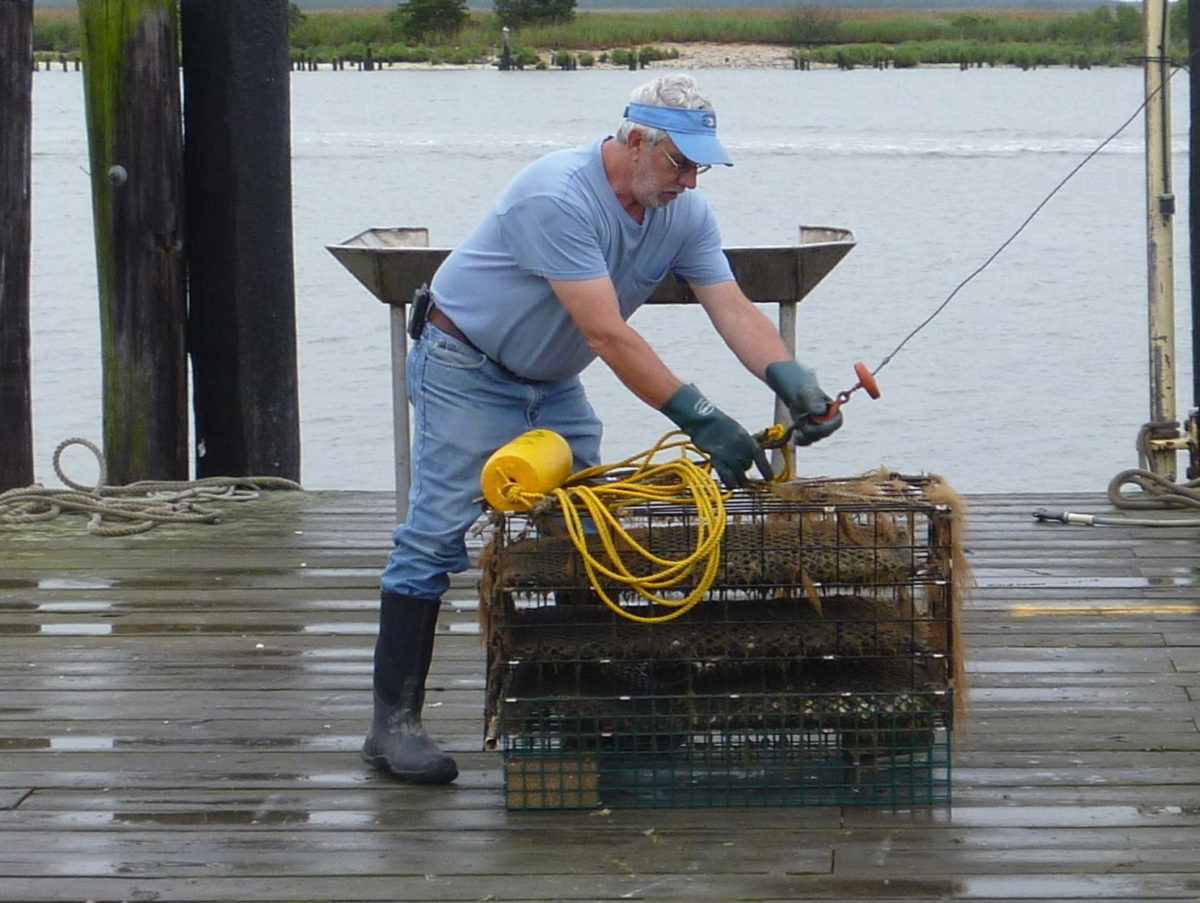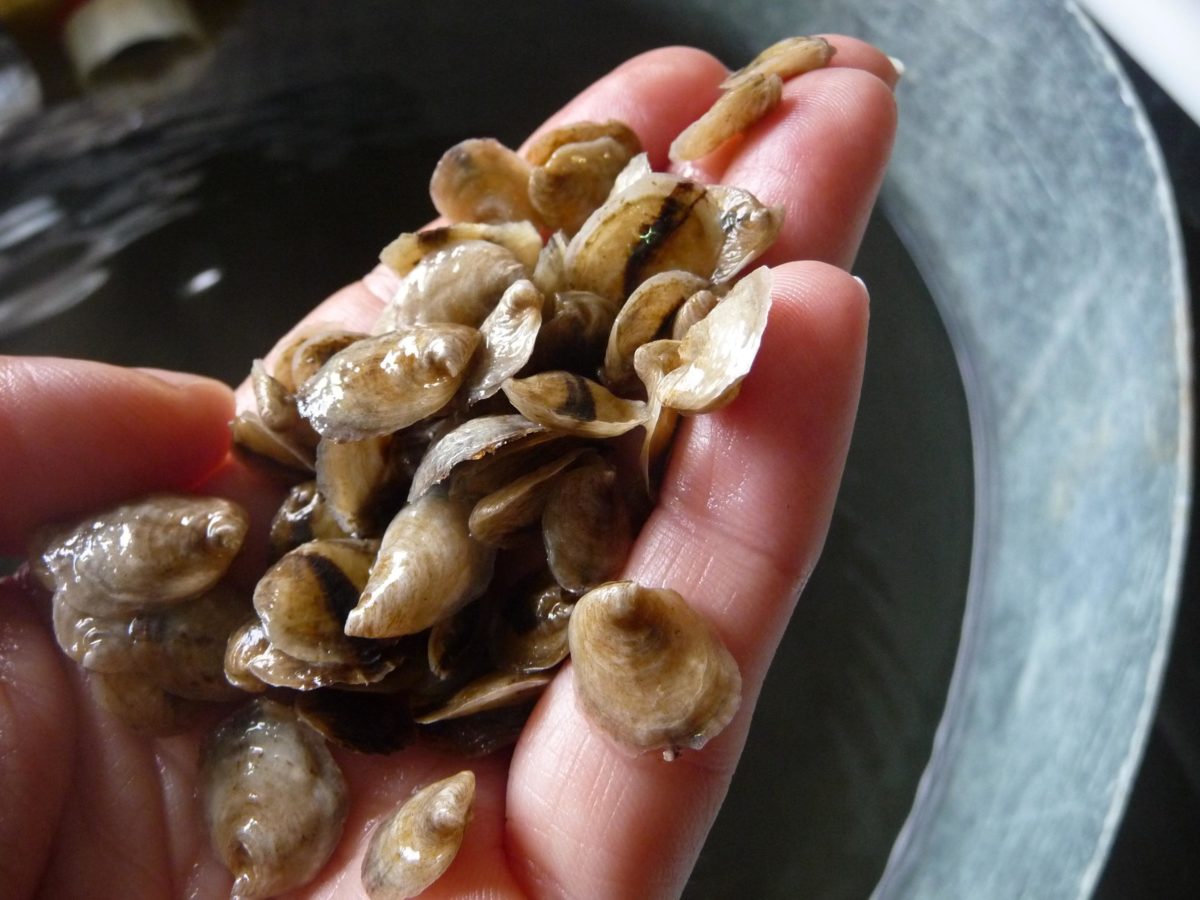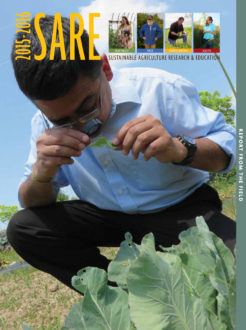[SARE: ADVANCING SUSTAINABLE FISHERIES]
Decades ago, wild oyster harvests from New Jersey’s Delaware Bay ranged from 1 million to 3 million bushels annually (at approximately 265 oysters per bushel), before diseases decimated wild oyster populations. Harvests have begun to rebound in recent years, thanks to an emerging oyster farming industry that produces about 1.5 million oysters a year. The farmed industry is poised for growth, but oyster farmers still lack basic, location-specific information that would help increase efficiency and production.

“These are not insurmountable research areas. Growers just need the time and resources to do simple research and innovative studies that will help them adapt to the harsh conditions of the bay,” says Rutgers University Aquaculture Program Coordinator Lisa Calvo.
Those research needs are being met in part by SARE: Since 2012, Calvo and local oyster farmers have received three SARE research grants to improve different aspects of the industry, from production to pest management to health and safety.
Recipient of a 2012 SARE farmer grant, Barney Hollinger is part of a family of oystermen that has been pulling wild-caught oysters from the salty waters for over 100 years. Since wild stocks are at such low levels, Hollinger recently started oyster farming to supplement his income. “We have a wild-caught sustainable oyster fishery, but with a quota system it’s hard to have enough oysters for your market,” he says. “We can use aquaculture to make up the difference.”
I had a great start from SARE to attack a critical question.
Lisa Calvo, New Brunswick, N.J.
One issue Hollinger and other Delaware Bay farmers face is determining what equipment to use to increase production capacity, while also keeping oysters healthy. Collaborating with Calvo, Hollinger used his SARE grant to test two different types of cages in the deeper, subtidal waters of the bay, where he has leases. He found that farming oysters in subtidal waters is a viable option, and improved oyster cultivation methods that are specifically suited for his operation and location.

Calvo also worked with 2013 SARE grantee and oyster farmer Betsy Haskin on biofouling, one of the most important issues facing the industry. Oysters provide ideal habitat for many types of organisms that live in the bay environment, among them a tiny mud-worm that builds its home on top of the oyster’s shell. This pest and associated mud can kill oysters, reduce their growth and make them hard to shuck, so farmers spend 30 percent of their labor costs managing biofouling. Haskin tested three “dip treatments” by immersing the oysters in different solutions. Unfortunately, none of the dips measurably prevented biofouling damage, but Haskin and Calvo are using this study as a basis for ongoing research on more effective control methods.
Recognizing that consumer health is integral to the industry’s sustainability, Calvo conducted her own 2014 SARE research project to determine the persistence of Vibrio—bacteria commonly found in marine waters—in farmed oysters grown in the Delaware Bay. This preliminary study found that local farmers who use best management practices can raise oysters with low levels of Vibrio and avoid human health risk.
“I had a great start from SARE to attack a critical question,” says Calvo. “It gives growers the information they need to help understand their local environment and provide the safest product possible.”
For more information, see the project reports for grants FNE12-747, FNE13-780 or ONE14-201
Free Resources!
Grantee product: Minimizing Risks of Vibrio Bacteria in Farm-Raised Oysters Grown in Intertidal Environments of the Delaware Bay (Download this fact sheet summarizing Lisa Calvo’s SARE-funded research).
Conduct topical searches of hundreds of educational resources.
